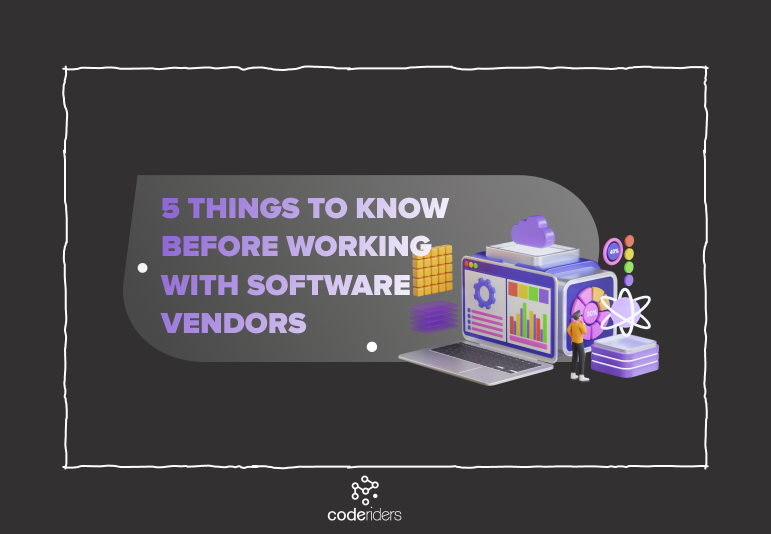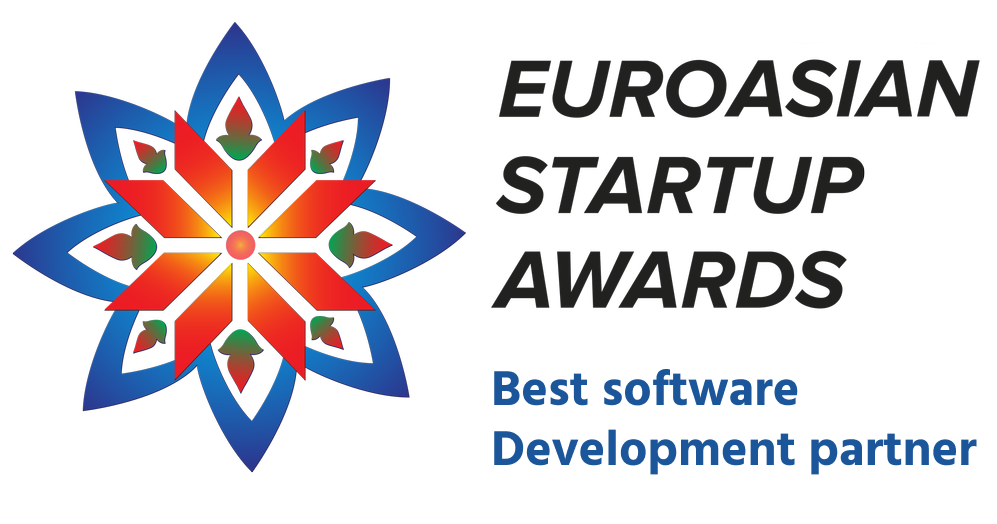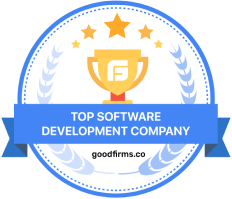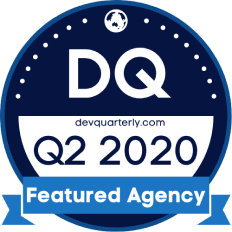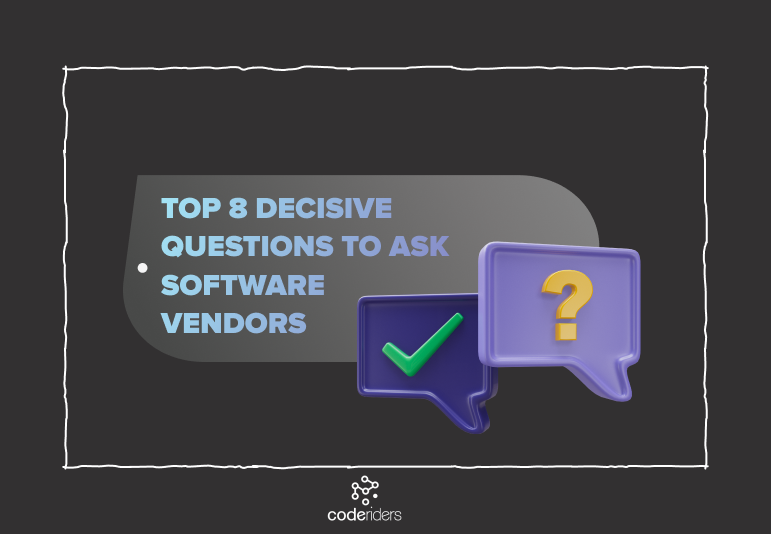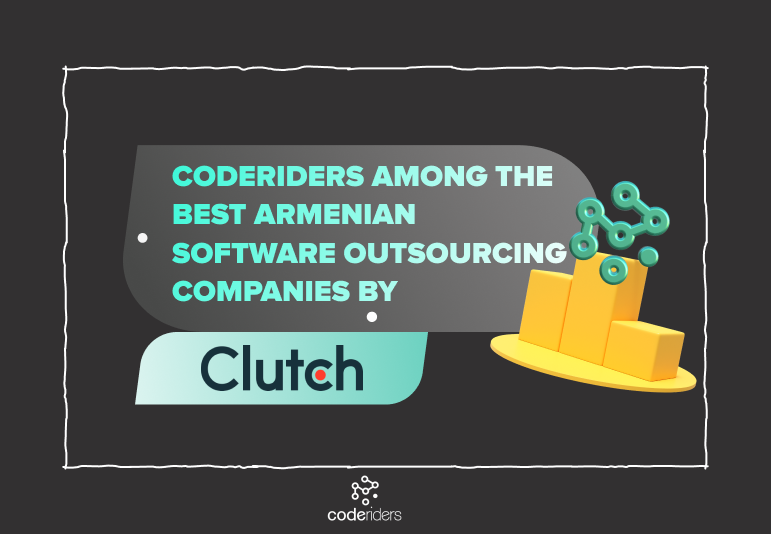Hiring the right software outsourcing company is among the top guarantors of a successful software outsourcing project. To succeed in custom software development outsourcing you should comply with a combination of multiple tasks. Think of your ideal software development vendor as a house where each well-constructed and ingeniously designed room makes the house more appealing and attractive than other real estate in the market. However, vendees should be directed to this ideal house to make the purchase. If in real estate you need a broker to help you out, it is not that complicated in software development outsourcing. Investing in offshore software development can be a piece of cake if you consider some factors when selecting a software vendor. Forget about a 3rd party interference or hiring a recruitment agency, instead concentrate on understanding your own expectations after the project end and draw your ideal metrics of success in partnering with a superb software development house.
In this article, we will segregate clear-cut, simple steps to consider before hiring your ideal custom software development house. These factors will also facilitate both the research and final vendor selection process. Let’s dive in.
1. Choose Between Nearshoring and Offshoring
Before starting your research for the best software vendor, you should state some possible locations that your software development company should be based. Although certain countries are very popular and beneficial for software development outsourcing, companies sometimes face some specific business needs or requirements that compress their choice of a software vendor. The top important factors are usually time difference and frequency of physical communication. Now let’s give a short description of the pros and cons of nearshoring and offshoring.

Nearshoring
Hiring a remote software development company based in nearby countries. When based in such countries and regions as Nordics, Switzerland, Great Britain, Germany, France, hiring your own in-house developers seems a luxury for many business owners. It carries a much heftier price tag and, in the meantime, these countries have a heavy shortage of qualified software developers. Thus, it is not a coincidence that outsourcing software development requirements to nearby regions such as Eastern Europe, Caucasus, or Western Asia has become a wise solution to this issue.
In fact, nearshoring has grown prevalently during these past years. If you are fortunate enough to neighbor or be near to the best software outsourcing regions, you will most definitely benefit from nearshoring and spend fewer resources on finding a high-quality software vendor. However, if your company is based in a country that has a talent shortage, high developer wages, and is located aloof or overseas, finding a good vendor within your country or in nearby countries may seem a little draining as you will have more decent alternatives. Thus, offshore software development often comes as an alternative.
Subscribe to Newsletters
Offshoring
Outsourcing custom software development requirements to a company located overseas. Countries like the USA, Canada, Australia, New Zealand as well as those from Eastern Europe are well known as software offshoring giants. These countries continuously outsource their custom software development needs overseas because of:
- The talent shortage in the software development industry within their country,
- High software developer salaries,
- The limited choice concerning nearshoring.
As mentioned earlier, although these countries proved that hiring an offshore software development company is a substantial investment, there are still some difficulties that should be addressed. These are:
- Time-zone differences and lack of face-to-face communication,
- Sometimes inability for quick fixes and real-time communication.
On the other hand, we live in the era of technology, where day by day the impossible becomes possible. Many alternatives are worked out to solve such issues; in the meantime, certain simple project development methodologies - such as Agile, Trello, Slack, and Jira - are implemented to overcome these concerns. So, before hustling to reject offshoring opportunities, try working with these project development methodologies and keep transparent communication with your software vendor. Ask your software outsourcing company to keep you in the loop all the time and make these channels open with complete access to their project-related communication instead of the snippets of conversation via email. These methodologies split your project into sprints or milestones, which are smaller development periods where you are invited to share your thoughts or concerns as well as give suggestions on the improvement of the development process.
Another crucial advantage includes budget management, which allows reviewing what has been done so far and what you are paying for. You can also have an active engagement in the development process or have direct contact with the developers besides the CTO if needed.
If you have any outsourcing concerns, we suggest contacting CodeRiders to discuss how we can help you.
2. Identify What You Expect out of the Project (features, professionals, engagement models, if any)
One of the keys to success is classifying the features that can help you reach the top. After reviewing your technical documentation (TD), a qualified and skilled software development team usually advises about the number and types of professionals that should be included in the project along with the time and budget estimates. However, it is always better to have your own notion of your custom software development process. Sort out some key points and most important features for your custom software needs and then find corresponding solutions to them. If you don’t have a ready-made TD in hand, we suggest at least having a product specification template. Check out the below sample.
free white paper
how to write a solid scope of work sow
This document helps in the first part of the cooperation process when you are looking for estimates. However, please bear in mind that to proceed further you should fill out another document clearly stating all the features and functions that you need, along with examples; like user stories, descriptions about each function, what it is for, who is the end-user, what is the purpose, etc.
Oftentimes companies have concerns about the start of the partnership. Clients get frustrated because they are confused themselves where to start. However, you should note that you would hardly make a deal with an appropriate offshore software development company without doing your part of the job. So, consider some factors when choosing a software vendor. Take your time preparing your concrete requirements with all the details and then start the project. By these means, your choice of software vendor and expectations will be quite accurate.

3. Hold Effective Communication with Your Software Vendor Candidate
Clients often find the beginning of their partnership with a software outsourcing company a little challenging if they are not certain about the project. Sometimes, they give up at the beginning because they avoid spending some time filing up their requirements. However, before rejecting a possible good candidate take your time on the communication process. It may be a little challenging at the beginning but take into consideration that a qualified vendor first demands in-detail requirements to avoid subsequent unclear questions and discussions. When both parties are on the same track and understand each other well, the further development process goes smoothly. So, we suggest testing this with your software vendor candidate. You can even organize a short test task.
If you are a non-technical person, communicate with your offshoring software team’s project manager and compare their skills with the other candidates. A good PM makes sure you are not inundated with jargon or language that is too technical for you. For example:
- Bug – An error in the website or app that hinders their proper running.
- Attribute – Information about elements of a component in your website design.
- Cache – A software or hardware component that stores data and helps in future requests to be delivered faster and easier. You may often hear from your software engineer to clear your cache for such a purpose.
- Crawl – Search engines send bots to your website to gather information on existing and non-existing pages, and refresh content that should be displayed or removed on search engines.
- User stories – Your software developer may ask for user stories for your required features or functions, which give information about how users should use the future feature.
The above terms are some popular examples of a typical developer’s glossary.
Sometimes CTOs also manage to hold clear communication with their non-technical clients but it is a little riskier, especially during big projects where CTOs have more responsibilities and their number one priority is to actually bring the project to its logical happy end through the developers’ expertise.
On the other hand, if you are a technical person you should make sure that you effectively communicate with your vendor. Be specific, don’t avoid discussions both short and long if there is a need, also be available and retrospective.
4. Pay Attention to the Talent Pool of Your Future Software Development Vendor
After you decide which professionals you want to have at your disposal, make sure you find the appropriate company. For example, if you come to the conclusion that to successfully finish your project you need 6 backend developers, 4 front-end developers, 3 mobile application developers, 2 project managers, and 3 QA specialists, you should obviously, look for those software development vendors that actually provide such specialists. Finding out how much supervision you will have to do and if it actually corresponds to your software vendor’s capabilities is one of the assets to avoid failure.
Moreover, today some custom software vendors also provide account managers and customer success managers, which become key contact persons and facilitate your job to the level of deeply analyzing and discussing your interests and handling any problems you might face. The difference between these professionals and project managers lays in the distinction of communication, which sometimes is missed by many companies. Project managers act as a “bridge” between tech staff and the client and make sure there are no misunderstandings between the non-technical clients and developers, while account managers and customer success managers discuss all the details, the pros and cons, and the risks included in the project. These professionals also have more advanced knowledge about coding.

5. Choose Your Tech Stack
We believe choosing a concrete tech stack always puts your project into certain frames. It gives less opportunity to discover other possible solutions that can be more beneficial for you. So, specifying a tech stack because you have heard that this or that language is better, is very naive.
What we suggest is to learn more about which technologies work best for your specific software or mobile application. You can even have a productive discussion with your vendor candidates. First, you will understand what they think, and how they work. Second, you will get some useful information. A qualified software vendor will most probably say that the efficiency of the tech language highly depends on a specific project with its peculiarities and will represent some beneficial variants. For example, if you want to get a HealthTech mobile application, the ideal vendor would represent mobile technologies, tell about their differences, explain the pros and cons of native and hybrid technologies, etc. We at CodeRiders, often get such questions and our approach is simple. We explain all of the differences, give pros and cons, as well as send related articles for the clients to look through and make the final decision accordingly.
Subscribe to Newsletters
To sum up, an ideal software development outsourcing company jump-starts your project.
So, before hiring your next offshore software development team make sure you ask yourself the following question; “What should I know before hiring a software vendor”. Gather useful information and consider some factors when selecting a software vendor. It is also very important to state clearly what you want out of the partnership. If you are definite in what you need and whom you need, you will easily find your ideal software vendor. Many professionals may doubt this approach but at last, choices are subjective and sometimes we subconsciously choose the one that we feel will be a good match. Make sure to be professional along the process and follow these tips, however after all trust your gut as well. The core of every successful project lays upon mutual understanding, naturally building good relationships, and being comfortable during the communication process.
Having
development
needs?
CodeRiders will address your web and mobile development challenges by creating custom software, helping with outsourcing services, or just consulting on your software development requirements.



